![]()
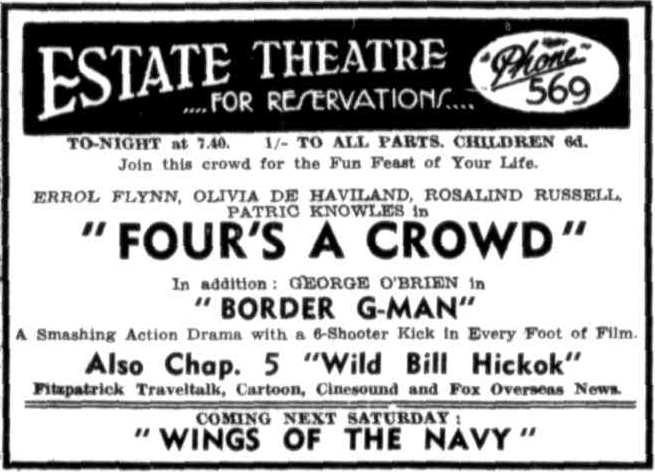
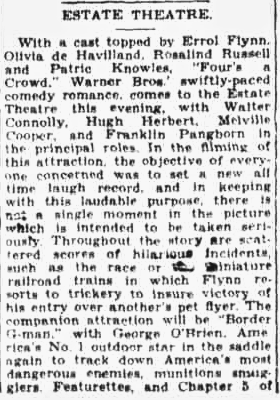

Two months later, in February of 1940, the Townsville Cyclone of 1940 caused extensive destruction in Townsville, including flooding of the Railway Estate area, where the Estate Theater was located.
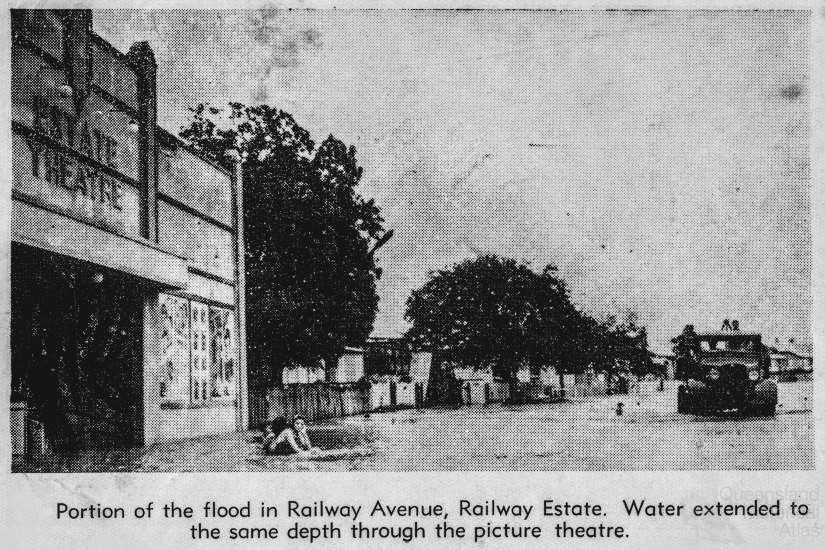
— Tim
![]()



Two months later, in February of 1940, the Townsville Cyclone of 1940 caused extensive destruction in Townsville, including flooding of the Railway Estate area, where the Estate Theater was located.

— Tim
December 13-14-15, 1940
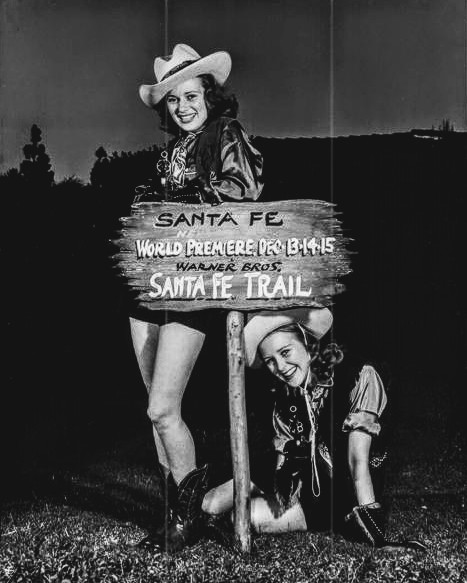
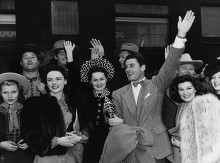
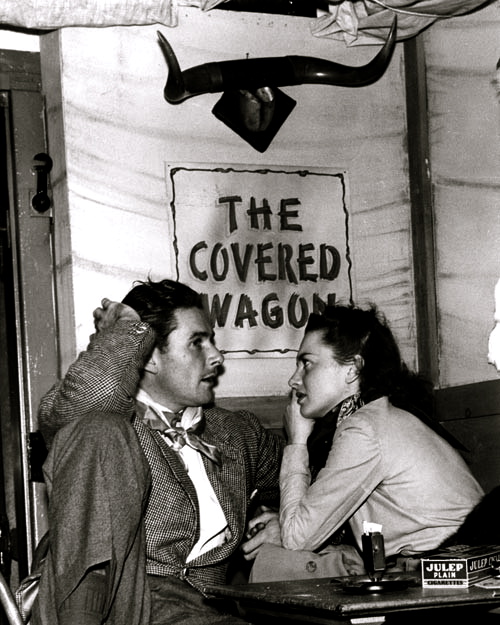
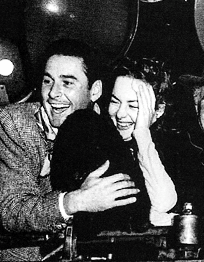
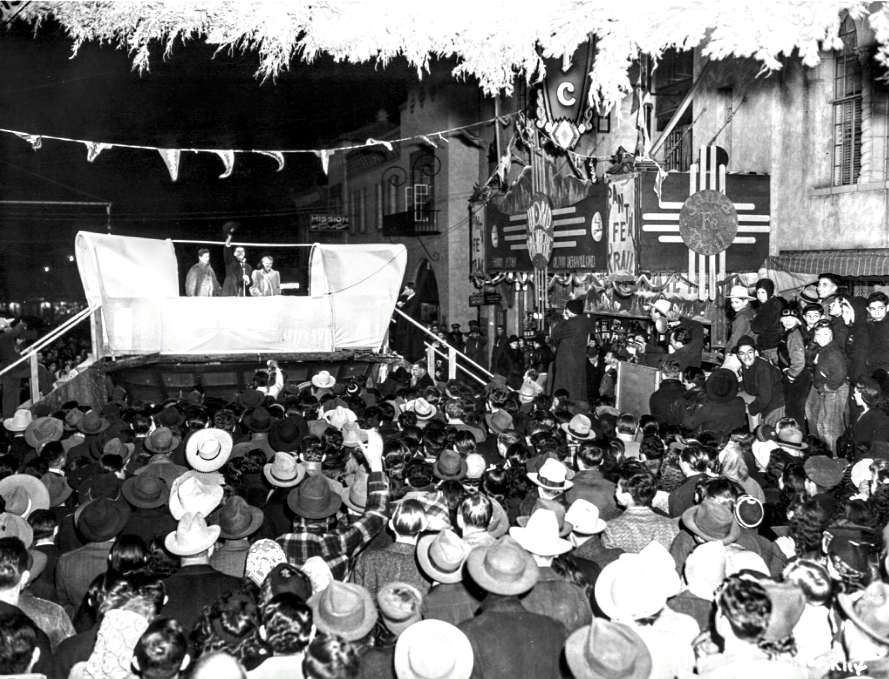
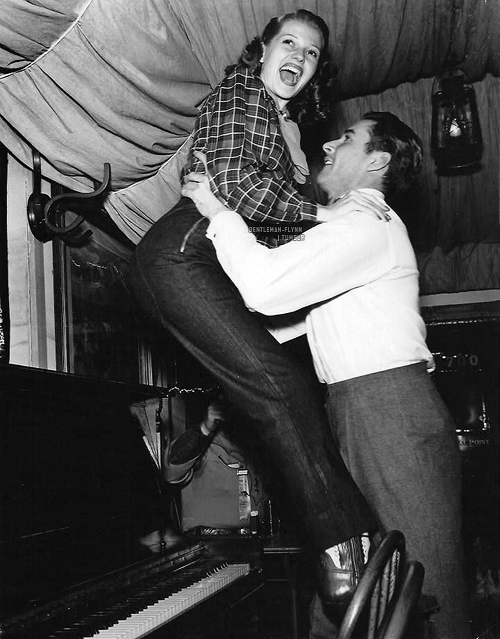
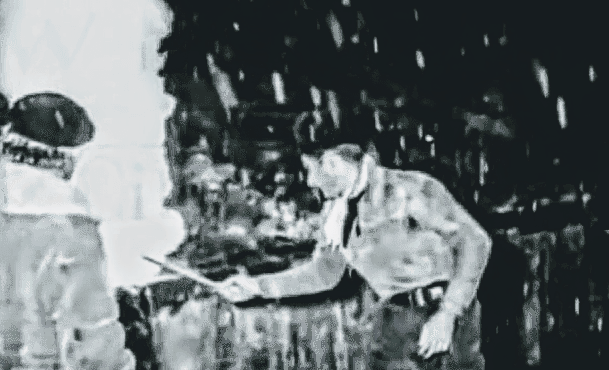
…
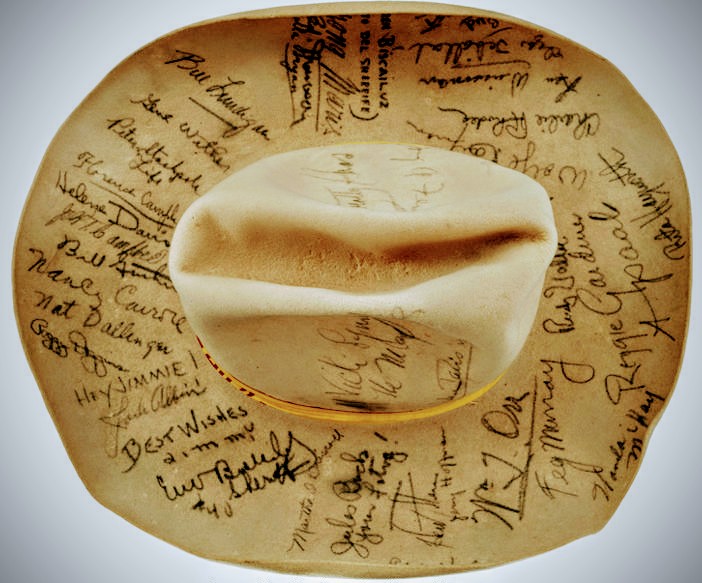
…
Contemporary news accounts:
Again the Old Santa Fe Trail”. The New York Times. December 8, 1940. p. 188.
Schallert, Edwin (December 13, 1940).
“Celebrities En Route to Film Event”. Los Angeles Times. p. 28. Daugherty, Frank (December 14, 1940).
“Santa Fe Greets ‘Trail’ Film With a Three-Day Fiesta: Parade of Indian Tribes, Official Reception Held”. The Christian Science Monitor.
— Tim

Monthly Schedule
Sat, December 12
6:30 AM
The Case of the Curious Bride (1935)
1h 20m | Mystery | TV-G
Perry Mason helps a young woman whose supposedly dead husband suddenly returns to life.
Director
Michael Curtiz
Cast
Warren William, Margaret Lindsay, Donald Woods
…
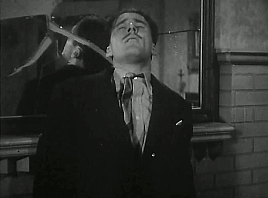
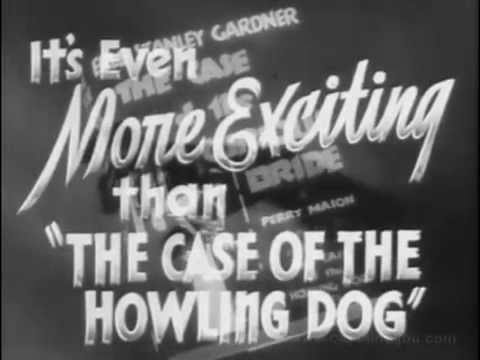
— Tim
November 22, 1946
At the Strand in Manhattan
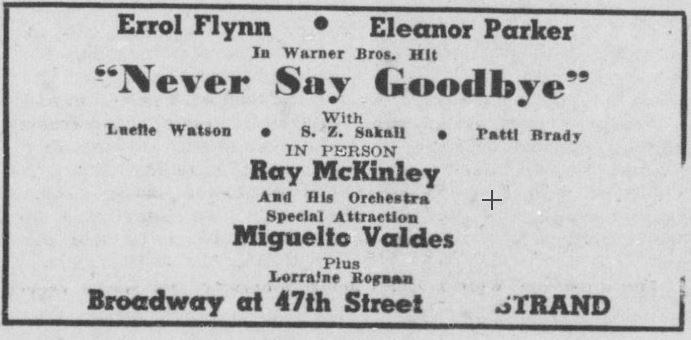
Jive Bomber
Led by Ray McKinley, famed drummer for Glenn Miller’s Army Air Force Band
…
…
Babalu by Señor Babalu
A Sensational Vocal and Dance Performance!
…
…
I Remember You
Lorraine and Ragnon
Lorraine’s husband and dance partner, Roy Ragnon, died in a plane crash during a WW II USO tour. Lorraine suffered very serious injuries from that same crash, and made an heroic comeback as a singer and comedienne, thus performing without her husband at the New York premier of Never Say Goodbye. This crash was depicted in the Susan Hayward film, With a Song in My Heart.
…
…
— Tim
November 21, 1941
New York Times
The Warners have been generous to a fault in paying their respects to General George Armstrong Custer. Certainly the man who is more famed for his celebrated last stand against the Sioux and allied tribes at Little Big Horn than for any of his several other exploits receives his due as a courageous soldier, and then some, in “They Died With Their Boots On,” which thundered into the Strand yesterday. Dismiss factual inaccuracies liberally sprinkled throughout the film’s more than two-hour length and you have an adventure tale of frontier days which for sheer scope, if not dramatic impact, it would be hard to equal.
Wave upon wave of cavalry charges packed with breath-taking thrills have been handled in masterly fashion by director Raoul Walsh, and they alone are worth the price of admission. Mr. Walsh, it is obvious, spared neither men, horses nor Errol Flynn’s General Custer in kicking up the dust of battle. But the director was not so fortunate in handling the personal drama and as a consequence “They Died With Their Boots On” has little verve between campaigns. With all the action of the Civil War sequences, it is not surprising that the intervening account of the General’s domestic life and his battle against political intrigue, which lacks genuine dramatic sustenance, should become a little wearying. After all, two hours and seventeen minutes requires a powerful lot of sustained drama. Mr. Walsh would have had a more compact and compelling entertainment had he whittled a half hour or so out of the script. But he more than makes up for this with his action shots.
From what the records show, “They Died With Their Boots On” is the screen’s first full-fledged attempt at spanning Custer’s remarkable career from his hazing as a West Point plebe, his almost story-bookish rise from second lieutenant of cavalry at the first Battle of Bull Run in 1861 to his appointment two years later as brigadier general of volunteers and commander of the Michigan brigade, which performed so brilliantly at Gettysburg. However fanciful the film’s account of his early Army career and the events in between his assignment as lieutenant colonel, Regular Army, of the Seventh Cavalry, may be, it nevertheless provides a broad view of a complex personality.
In the massacre at the Little Big Horn in 1876 the film credits Custer with knowingly sacrificing his small forces to prevent the warring Indians from swooping down upon General Terry’s unsuspecting regiment, a viewpoint in variance with certain historical accounts of the tragedy. Errol Flynn, who approximates the general in physical characteristics, is excellent as the dashing, adventuresome cavalryman. Olivia de Havilland is altogether captivating as his adoring wife. Others in the long cast who acquit themselves with credit are John Litel as General Phil Sheridan, Sidney Greenstreet as General Winfield Scott and Stanley Ridges as the fictitious Major Taipe who engineers Custer’s court-martial. George P. Huntley Jr. gives a magnificent performance as Custer’s fellow-officer and buddie.
THEY DIED WITH THEIR BOOTS ON; screen play by Wally Klein and Aeneas MacKenzie; directed by Raoul Walsh for Warner Brothers.George Armstrong Custer . . . . . Errol Flynn – Elizabeth Becon (Beth Custer) . . . . . Olivia deHavilland – Fitzhugh Lee . . . . . Regis Toomey- Major Romulus Taipe . . . . . Stanley Ridges – Ned Sharp . . . . . Arthur Kennedy – General Scott . . . . . Sidney Greenstreet – William Sharp . . . . . Walter Hampden – General Phil Sheridan . . . . . John Litel – Lieut. Butler . . . . . George P. Huntley Jr. – Crazy Horse . . . . . Anthony Quinn – California Joe . . . . . Charley Grapewin – Sergeant Doolittle . . . . . Joe Sawyer – Captain Webb . . . . . Frank Wilcox – Captain McCook . . . . . Selmer Jackson – Senator Smith . . . . . Minor Watson – Lieut. Frazier . . . . . DeWolf Hopper
A version of this article appears in print on Nov. 21, 1941 of the National edition with the headline: At the Strand.
…
…
…
— Tim
November 17, 1949
marble-arch.london/culture-blog/royal-film-performance-at-marble-arch-odeon/…
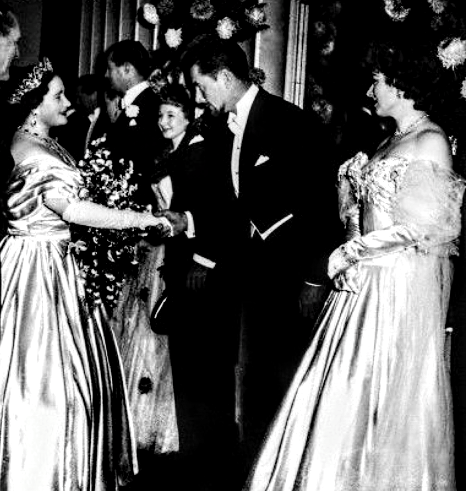
— Tim
New York Times — November 12, 1959
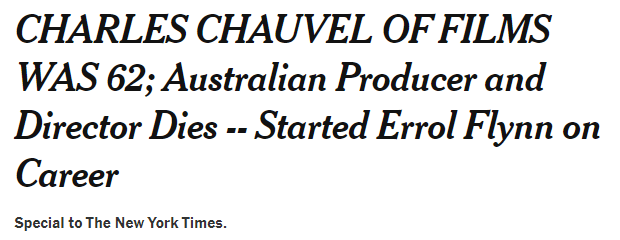
Charles Chauvel was both a producer and director, wrote his own scripts and handled casting and a great deal of the publicity. After marrying Charles, South African actress Elsie Sylvany changed her name to Elsa Chauvel and became an instrumental part of Charles productions, handling make-up, continuity in the early films, and later co-writing scripts. Their first sound film “In the Wake of the Bounty” gave Errol Flynn his first screen role, as Fletcher Christian of the Bounty, and was filmed on Tahiti and the remote island of Pitcairn.
Charles Chauvel
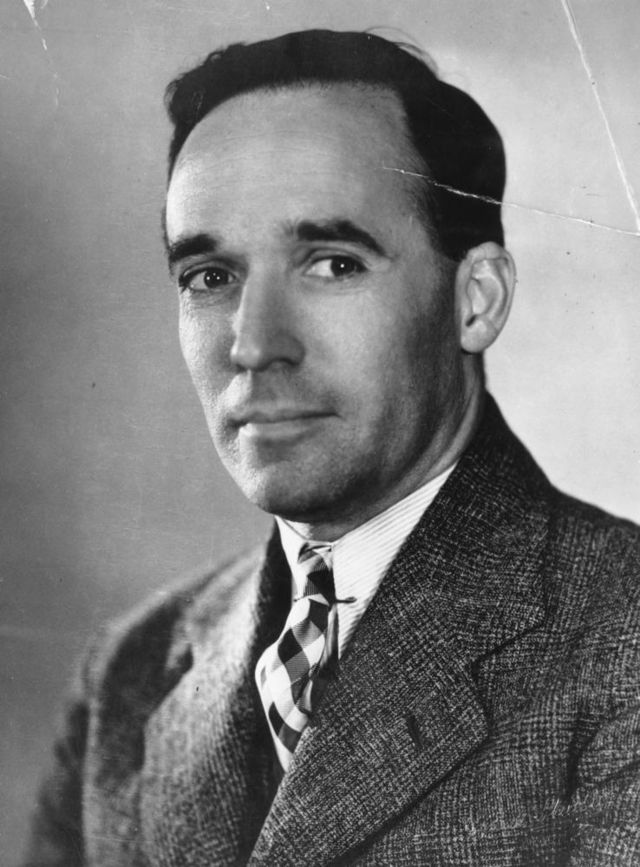
(Gorgeous) Elsa Chauvel
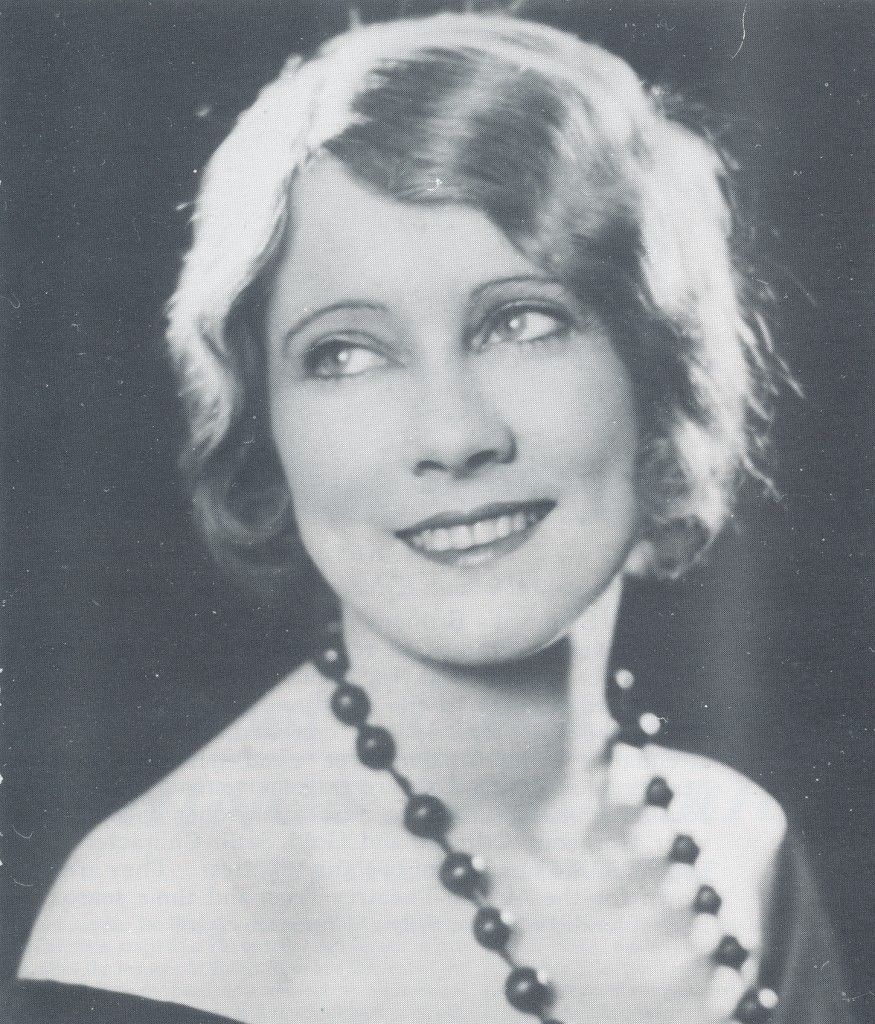
In the Wake of the Bounty – The Book
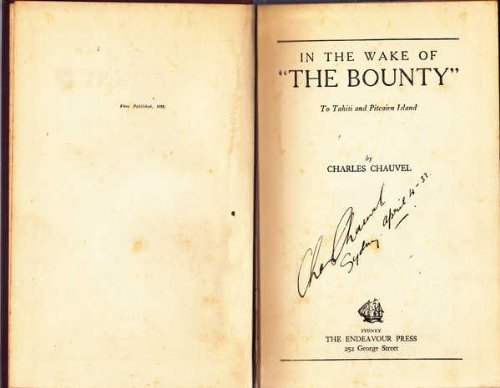
Premier at the Prince Edward Theater in Sydney
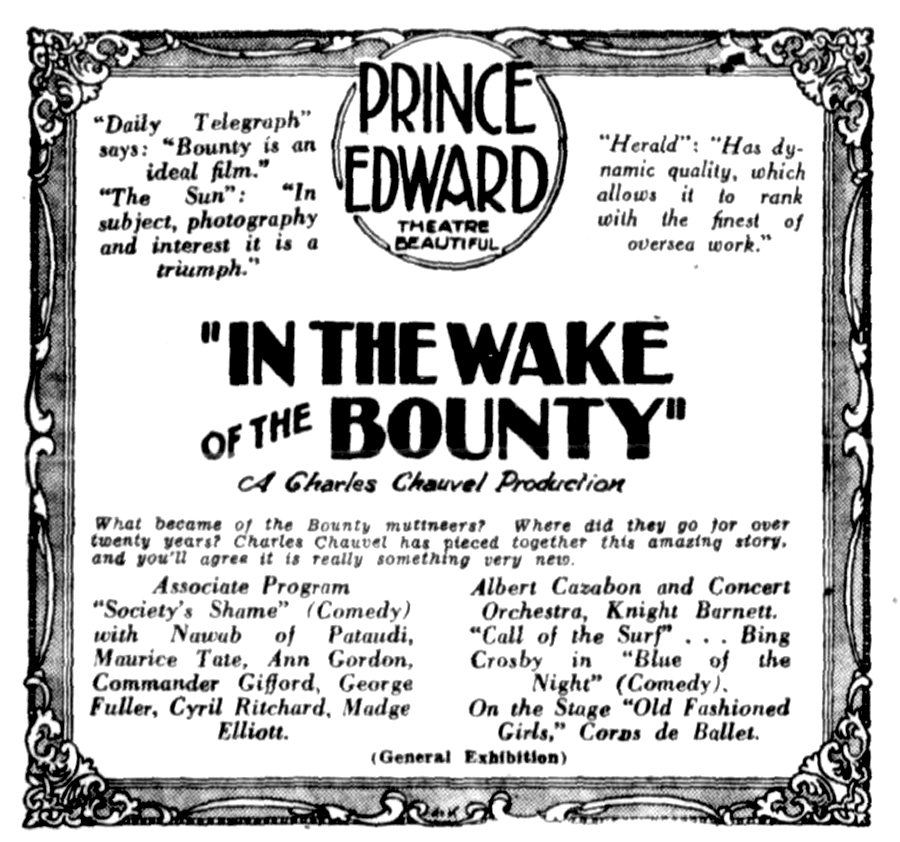
How Errol was discovered by Charles Chauvel. …An alternative account, often regarded more accurate, is that Errol was brought to the attention of Chauvel by John Warwick,an actor in the film, who apparently was impressed at Bondi Beach by Errol physique, charisma, and charm, and brought him (possibly to a casting session) to see Chauvel. There has also been a humorous account I heard many years ago – perhaps started by Errol himself – that, in order to get the role of Christian, he deliberately punched and broke the nose of the actor already slated for the role in a Sydney saloon the night before filming began.
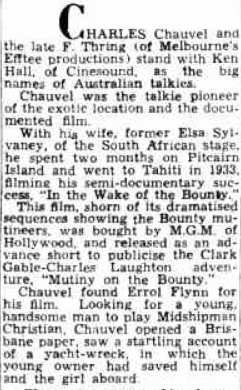
— Tim
Misadventures pf Captain Fabian, The Man Who Cried, and Hello God
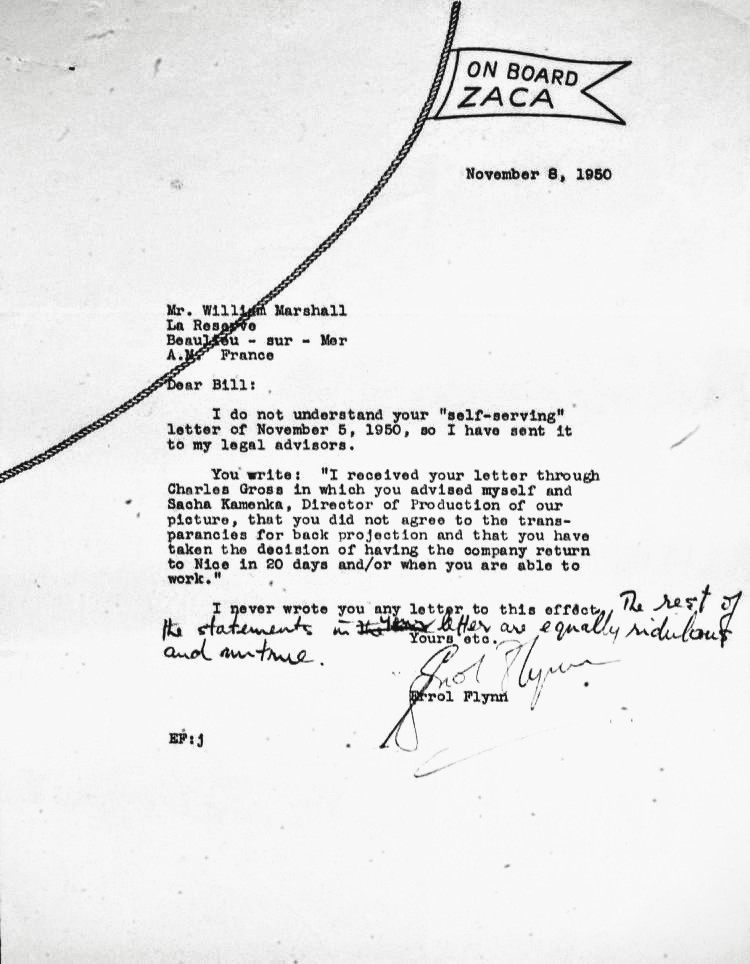
The film was originally known as The Bargain and was based on a script by Errol Flynn himself. Flynn entered into a multi-picture deal with William Marshall to produce the film, among others, in July 1949. It was to be produced independently with a distributor sought later. Micheline Presle was borrowed from 20th Century Fox to play the female lead. Gérard Philipe was to be in the cast but did not appear in the end. (Presle and Marshall later married.)
At one stage the film was also known as Bloodline and New Orleans Adventure. Filming started on July 15, 1950 in Paris under the title of The Bargain. Exteriors representing New Orleans were recreated in the city of Villefranche with studio scenes shot at the Victorine Studios in Nice and the Billancourt Studios in Paris.
Under Errol Flynn’s contract with Warner Bros, he was allowed to make one “outside” film a year until 1962, provided it had a major distributor. Flynn later claimed that during filming, William Marshall “secretly” committed the film to being released by Republic Pictures, one of the smaller studios. Both Warner Bros and MGM, who had films starring Flynn awaiting release, were unhappy with this. Flynn worried that Warner Bros would use this as an excuse to cancel their contract with him on the basis that Republic was not a major. On 18 December 1950 he filed suit in the Los Angeles Superior Court asking them to stop Republic from releasing the film and to stop Warner Bros from cancelling the contract until the court could determine that Republic was a “major” distributor.
The movie was meant to be the first of two films from Flynn and Marshall, the second which was to be The Man Who Cried, a psychological thriller about the perfect crime set over a four-hour period, but this wasn’t made due to a dispute between Marshall and Flynn over Hello God.
In January 1952, Flynn asked a court to formally end the partnership with Marshall.
— Tim